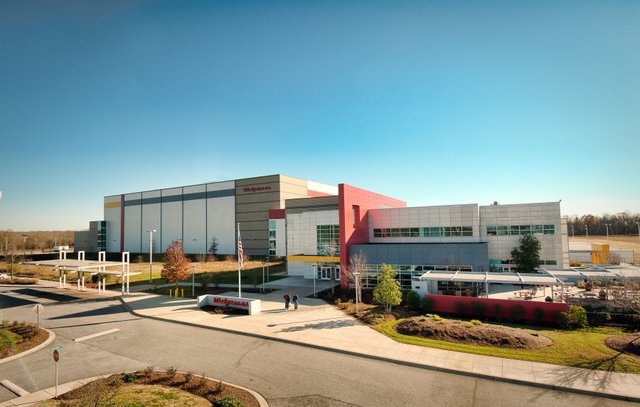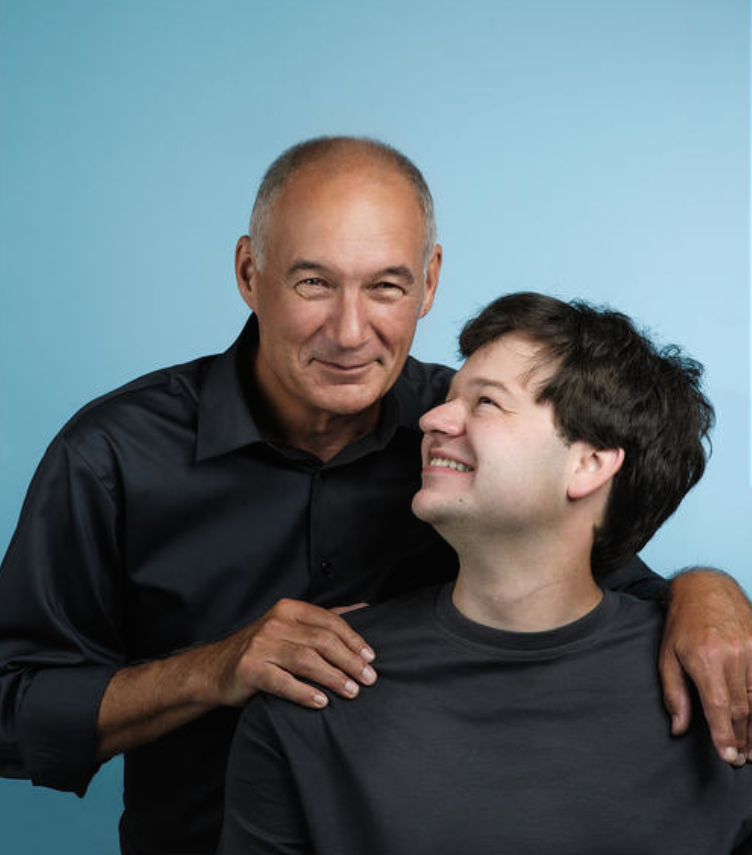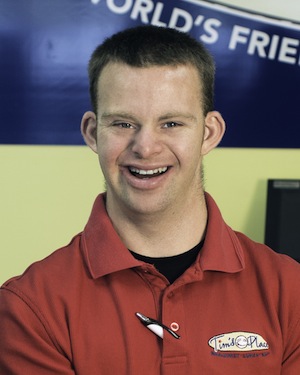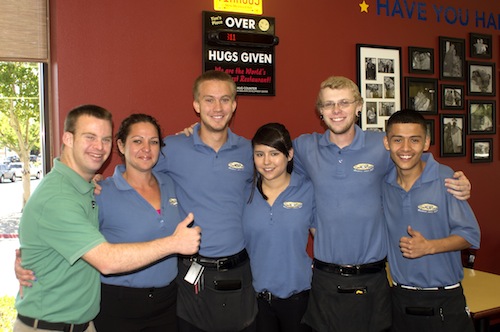By Joan Leotta
Randy Lewis Creates Jobs with Living Wages for People with Disabilities

The Walgreens Distribution Center in Williamston, South Carolina
Randy Lewis is a man on a quest for justice—justice for people with disabilities, which according to Lewis, includes the right to the accommodations necessary to become a productive employee. Lewis’ motto, “doing good is good business,” is his blueprint for creating change for people with disabilities in the modern American workplace. During his tenure as a Walgreens’ executive, Lewis persuaded Walgreens’ corporate leaders to adopt a best practices model which led to increased employment opportunities and job retention for people with disabilities within their South Carolina distribution center. As much as Lewis is gratified by the success of the program, this issue was not only a professional win but also a paternal victory. His son, Austin, a young man on the autism spectrum, inspired Lewis to make inclusion a reality in every facet of his son’s life. These efforts have contributed to his vision of justice in the workplace.

Randy Lewis and his son, Austin
Inspired by these events, Randy Lewis wrote, No Greatness Without Goodness, to share the experiences that ultimately lead to Walgreens’ to lead the industry in transformation. While No Greatness Without Goodness is a corporate handbook, it is also a deeply personal narrative that traces the Lewis family’s personal struggles when first learning of, and ultimately adjusting to, life with Austin. No Greatness Without Goodness lays out a life-tested blueprint for others to create an atmosphere where workers with disabilities can achieve great things alongside their fellow, non –disabled employers. (See Sidebar—Review of the book)
No Limits
As Austin’s father, Lewis learned to develop greater flexibility while still expecting the best from his son. Through Austin’s victories, Lewis discovered that while his son’s best would come about in unexpected ways, his best would indeed come.
Contemplating the future of his differently- abled child and anticipating how little was available for him in the job market, Lewis approached Walgreen’s with the idea of hiring 200 of their 600 anticipated new employees in a newly-constructed South Carolina distribution plant.
The two words, “no limits,” perfectly capture Lewis’ approach to realizing an employment plan for workers with disabilities. Another byword, “why not?” became just as familiar. When the Walgreens’ executives and the line staff found themselves confronted with any potential problem unique to these 200 new hires, one question in particular was inevitably asked: ‘can a person with a disability of this or that type perform the needed task?’ Lewis’ team became accustomed to his reply, “Why not?”. Because parenting Ausitn taught him flexibility and confident expectation in his son’s abilities, Lewis placed no limits on what Walgreens’ newest hires might achieve: “Our experience was with autism but [even then] each case is individual with autism. People are not dis-abled, just differently-abled. Why limit yourselves? The typically-abled view differently-abled people all as equally inadequate—I knew the biases so we did not presume that certain [new employees] could or could not do the work. For instance, I didn’t consider cognitive impairment until it was brought to me, but when someone asked about it I said, ‘why not?’ There are no limits to what we can do, what anyone can achieve.”
Making it Happen
Lewis says that the first line of business was to think through the design of the building and remove physical barriers for this unique workforce. Then they reached out to the community, both the larger disability community and the local community to gain further input. The next step was to involve current Walgreens’ employees.
“Getting colleagues and subordinates to engage was a matter of building the program in such a way as that everyone understood this project was my responsibility. We simply had to … take away [professional] fears. There were no punishments or rewards associated with hiring people with disabilities. If you introduce fear, people run away. To innovate, you need them to run to something. So, I reminded them ‘if we don’t do it who would? And if we can’t then no one can.’ We also went with a—’let’s give it our best and see’ approach. Making it a no-risk positive encouragement was the way to go. People want to do good. My colleagues just had to be assured that if the project fell through, I was the point man who would take the blame. Once they were free from possible punishment, they also were free to do good.”
The President of the company also had to be persuaded. Lewis accomplish this lofty task by pointing to the bottom line: hiring people with disabilities would not sacrifice revenue. Further, as a pharmacy, the company was already geared towards serving the community. Lewis simply demonstrated that from a business standpoint, Walgreens was capable of both doing good and earning a profit by continuing its already established practice of making a difference within the communities served by the company.
Helping Hands
There were several groups and one individual in particular who rallied behind the idea of selecting a third of the workforce from people with disabilities. Lewis remembers that “the HR people, and the people in training … really believed in this and helped make it happen.” He realizes that at times corporate culture tends to be yield to the credo: ‘it’s not personal, it’s business,” so that discussions involving the heart and emotions are infrequent. This team set a new standard. Karen Preston, the head of training, was joined by Walgreens’ staff in South Carolina where they laid the groundwork that proved crucial to training people with autism. Lewis adds,”They got excited [when] they knew they were going to change the world, … what we were doing had never been done before. As the staff members worked they saw their assumptions being brushed aside by their experience with people with disabilities. They knew they could right a wrong and recognized that it was unjust to not hire these people.” The initial goal of this effort was to ensure that one third of the 600 newly hired employees were differently-abled. Lewis says, “We exceeded that goal when the employees with disabilities became about forty percent of the workforce.”
Wage Achievement
One of the greatest advancements in this initiative was that from the outset both the differently and typically abled employees earned the same wage for the same work. Lewis explains, “We expected the same performance and so we paid the same wage. When problems arose that made it difficult for the new hires to do the same job, at the standard level of productivity … again we approached each problem with the, ‘why not?’ mentality as opposed to the ‘why?’.
A Profile of the Workforce
Over eighty percent of the hires had never been able to hold a job before being employed by Lewis at the Walgreens’ distribution facility in 2007. Some were made supervisors at the beginning and many have become supervisors since. Almost all of the original hires are still working for the company. The retention rate is twice that of typically abled employees.
Share the Wealth: What They Have Learned and Shared with Others
What is even more remarkable is that Lewis has taken steps to ensure this success continues. From the beginning, Walgreens viewed this effort as a template for others to use when seeking to an employment demographic of diverse abilities. With Walgreens’ proud approval, Lewis gives tours of the distribution center to share the success story with other companies and stand as a model for equity and inclusion .
“From the beginning we had to get things right,” Lewis says. “I have had to learn new vocabulary —everywhere we went we contacted people. We did not presume we knew how to do it so we went … within the community to work. We got the word out in newspapers. When our story reached the disability community, it spread like wildfire. By word of mouth, soon everyone had heard about it. Even the Wall Street Journal had an article about our progress.”
Models of Modifications
Making the building accessible was one of Walgreens’ top priorities. Lewis explains that Walgreens had early decided to go above and beyond legal accessibility compliance standards. The comfort and capability of the employees were always of the utmost importance. Furthermore, Lewis found ways to be financially prudent by approaching accessibility with creativity: “We didn’t spend a lot of extra money when designing the equipment. [We tried to be] as flexible as possible while anticipating various needs: sensitivity to light, motion, noise. We were able to adjust the equipment without spending more money. We were not limited by the necessary financial boundaries by opting to take a creative and effective approach to make the work space both efficient and accepting. The term ‘universal design’ encompassed our solutions. Of course they were not perfect, but with time we adjusted.”
Lewis goes on to say, “Some of it we over-thought. At first we were so concerned about transportation for the employees with disabilities that we considered vans. That turned out not to be practical so next we worked with the city on transportation and asked them to rearrange the bus routes so that more people could get to facility. After a while, I discovered that not many people were using it.”When he addressed the issue with a member of the disability community, that person replied: “When people are paid a good wage for the job that they do, they will find a way to get work.”
Reflection
Lewis says that the best advice he can give to those who want to replicate Walgreen’s inclusion model is taken from the movie, Field of Dreams: “If you build it, he will come.” “Our approach was to find the shortest distance between two points–a straight line. We hired people and then figured out how to structure the job and or worksite so they could do it.” He advises those who are moving towards similar targets to ensure that they have the will to accomplish the goal of hiring people with disabilities. He adds, “the how will become apparent to you.”
Today, Lewis works with executives to help them accomplish what Walgreens has and to remind them that such projects are not easily completed; they require support at all levels within a company, ranging from the executives to the line workers. Progress has to begin with executive support, he notes, and the firm belief that the company really wants to do be successful. Without these well-coordinated cogs, the project will fail.
The payoff, however, is enormous and the future for similar accomplishments across the business landscape is bright. Randy Lewis looks forward to many other companies hiring people with disabilities and leveling the playing field for all employees.

 Owning Tim’s Place is a dream come true for Tim Harris, a young man with Down Syndrome. As manager of the restaurant, Harris puts into practice what he learned while in college studying food service and restaurant hosting. He also continues a rewarding career that he started while working at many different restaurants during high school, college and after college. The restaurant also allows him to also give back to the community as an employer and a sponsor of Special Olympics and the National Down Syndrome Congress.
Owning Tim’s Place is a dream come true for Tim Harris, a young man with Down Syndrome. As manager of the restaurant, Harris puts into practice what he learned while in college studying food service and restaurant hosting. He also continues a rewarding career that he started while working at many different restaurants during high school, college and after college. The restaurant also allows him to also give back to the community as an employer and a sponsor of Special Olympics and the National Down Syndrome Congress.

